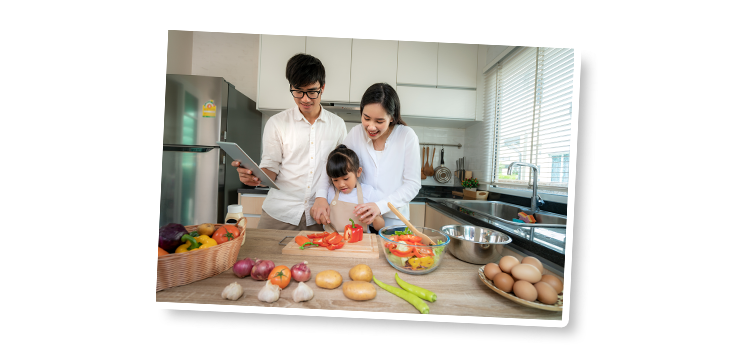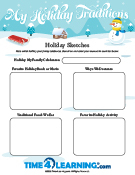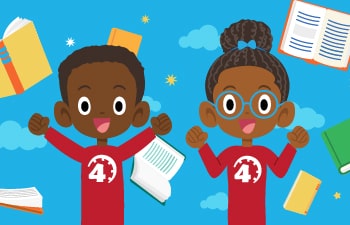As the world is changing, the way we teach our children is evolving too. Learning does not only happen in a classroom but also in the home – and not just at a desk, but anywhere in the house. In fact, The home kitchen can be an excellent place to instill learning opportunities for your child. From simple math activities and hands-on science labs to cultural exploration and lessons on nutrition, there are many ways to use the kitchen to create a fun and educational experience. Let’s discuss easy learning opportunities in the home kitchen for K-12 students in math, science, storytelling, and cultural learning.
Preschool-Kindergarten
For the youngest of students, the kitchen can be the perfect setting to learn about colors, shapes, and textures, all key preschool math skills to practice. Parents can teach their children about different fruits and vegetables, their unique colors and shapes, and how to identify and compare them. This is an excellent opportunity to introduce the concept of healthy eating to young children.
Especially when engaging with preschoolers, storytelling can be a wonderful addition to kitchen activities. For example, while making pancakes, you can create a story about a magical pancake chef who sprinkles secret ingredients to make the pancakes extra delicious. As you cook together, you can weave the tale, sparking their imagination and making the experience even more enjoyable.
Elementary School
Younger learners expand their elementary math foundations into measurement, ratios, and proportions. Measuring and mixing ingredients serves as a hands-on activity for students to learn precision, accuracy, and following instructions. They also gain a deeper understanding of the importance of measurements and the science behind combining different ingredients. This practical approach fosters a sense of curiosity and creativity, as students explore the art and science of cooking while honing their culinary skills.
Through the exploration of global cuisines, storytelling and cultural learning can be integrated into the kitchen environment for elementary schoolers. Parents can choose a country each week and prepare a traditional dish from that region with their children. This process can involve researching the recipe, its origin, cultural significance, and traditional cooking methods. The children can then present their dish and share what they’ve learned about the culture and history associated with it, practicing their storytelling and elementary writing skills. This activity not only expands their understanding of global cultures and geography, but also is a fantastic way to insert a lesson on diversity and inclusivity.
Middle School
Students in grades 6-8 can delve into the scientific aspects of cooking. A fantastic way to do this is by exploring the concept of chemical reactions. For instance, students can bake bread or cookies to understand the role of yeast or baking powder in causing the dough to rise. This activity provides a practical demonstration of how carbon dioxide is released during the baking process, leading to the dough expanding. This not only enhances their understanding of chemistry but also shows them the real-life application of scientific concepts.
Immerse your middle schooler in the rich tapestry of culinary cultures, unlocking insights into geography and traditions. This exploration beautifully aligns with the world cultures theme in middle school social studies. Parents can teach their children about how the availability of ingredients inspires regional dishes. For an easy assignment, parents could challenge children to prepare a meal with limited ingredients or create a cultural dish that their family has never tried before. This way, they can learn about other cultures through food and gain an appreciation for diversity.
High School
Since many older students take an introduction to chemistry as part of their coursework, high school is a great time to explore even deeper the science behind cooking. Students can delve into the scientific principles of acids and bases while using ingredients like vinegar and baking soda. They can also investigate the chemical reactions involved in cooking processes, such as the caramelization of sugars or the emulsification of fats. These experiments and discussions not only foster a grasp of food science but also empower students to grasp the fundamentals of chemistry.
From a social studies lens, high school students can explore food histories from different cultures. Interviewing someone knowledgeable about their cultural cuisine is a great idea. Students can prepare thought-provoking questions like: “What is a traditional dish in your culture?” or “What ingredients are commonly used and why?” This activity promotes understanding of cultural diversity and traditions through food. After the interview, students can share their findings with classmates and even try cooking a dish based on the information they gathered. This hands-on experience enhances culinary skills and fosters appreciation of global cultures.
Free Holiday Traditions Worksheet
A shared meal is often at the center of holiday gatherings! Explore your family’s holiday traditions through these fun art and writing prompts that are ideal for students of all ages.
Learning opportunities in the home kitchen are easy to integrate and can be valuable experiences for K-12 students. From simple exercises with measuring and mixing in the early stages of development, to experimenting with cultural foods in middle school, to exploring nutritional science in high school, the home kitchen provides endless possibilities. Through cooking and baking, students learn essential skills like math, reading comprehension, scientific observation, teamwork, and culture. The home kitchen gives them the opportunity to be creative, think outside the box, and enjoy a fun learning experience. So, the next time you’re cooking up a storm, consider inviting your child to join you!








Thank you for these wonderful tips! This has helped me see cooking as an enriching teachable moment for my children. I spend a lot of time in the kitchen preparing meals for my kids (in-between our homeschool lessons), so I will definitely include them with some of the meal prep and cooking. Loved this blog post!
We’re happy you found it helpful, Jennifer! Hopefully, this helps you maximize your homeschooling experience AND get dinner on the table — with HELP!